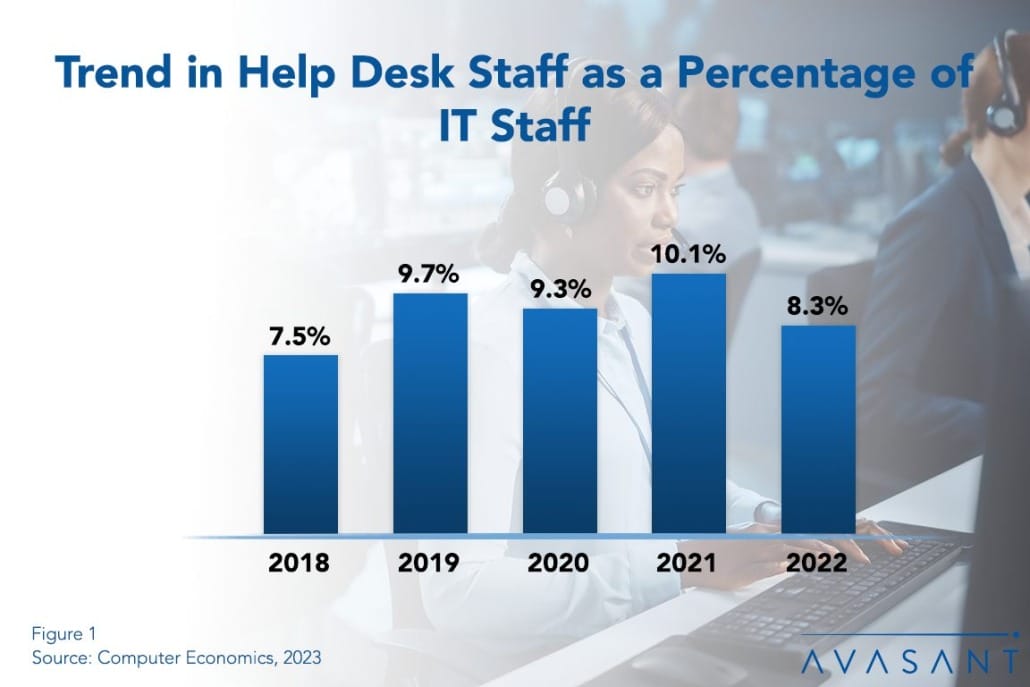The help desk plays an important role in the delivery of IT services to the business. However, in 2022, help desk staffing declined to a level not seen since prior to the pandemic. Businesses are adapting to new working models, which may be one factor impacting this staffing ratio. The size of the help desk staff might just be returning to normal after growing to cover increased work-from-home during the pandemic lockdowns.
As shown in Figure 1 from our full report, Help Desk Staffing Ratios, the ranks of help desk personnel contracted during the past year—lowering to 8.3% at the median, down from 10.1% in 2021 and 9.3% in 2020.

Some factors may lead to a decline in help desk staff in the future. For instance, help desk technicians increasingly handle PC issues remotely, reducing the need for on-site staff at every office location. Software as a service (SaaS) applications and desktop virtualization mean fewer business applications are running on the user’s local desktop or laptop. On the other hand, SaaS applications can also create issues for the help desk.
Also, remote systems management software and other systems are reducing support costs. In the future, self-diagnostics, self-healing, and self-support systems promise to control the cost of help desk support further.
On the other hand, the COVID-19 pandemic re-emphasized the importance of help desk staff. Due to lockdowns, many companies were forced to move their teams to work primarily from home, sometimes literally overnight. As such, remote issues became a staple in any working environment. But resolving remote issues is often more time-consuming because they depend heavily on end-user skills and cooperation. The help desk staff was at the forefront of a major shift in the way we work and will continue to be so as we shift to a hybrid work environment, where employees will be expected to work anywhere seamlessly.
Companies are using a greater variety of business applications, which puts increasing demands on the help desk. And, as we have been reporting, the more companies automate routine business processes, the more people skills matter, and the more experience matters. As a result, the help desk becomes the front line for the IT organization in showing its worth to the user community.
“Help desk staffing levels require ongoing assessment,” said Tracell Frederick, research analyst/editor for Avasant Research, based in Los Angeles. “Benchmarking against industry standards is an important starting point for determining whether a help desk is appropriately staffed for delivering quality service at the lowest possible cost.”
The full report provides metrics for benchmarking help desk staffing levels in the current environment. We look at the trend in help desk staffing over a five-year period and provide four benchmarks by organization size and sector: help desk staff as a percentage of the IT staff, users per help desk staff member, applications per help desk staff member, and first-call resolution rates. Because companies organize the end-user support function in different ways, we also provide benchmarks for a combined help desk and desktop support staff. We conclude with recommendations on optimizing help desk staffing levels.
This Research Byte is a brief overview of our report on this subject, Help Desk Staffing Ratios. The full report is available at no charge for subscribers or it may be purchased by non-clients directly from our website (click for pricing).


